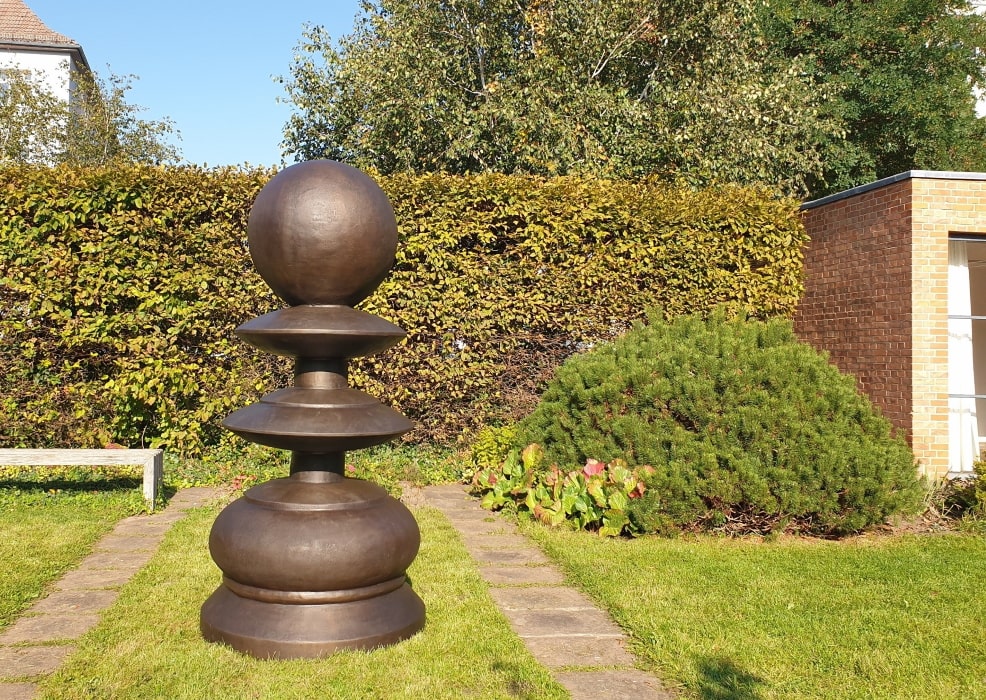For the first time in the history of the Mies van der Rohe Haus, an exhibition will occupy the entire expanse of the outdoor space. In the exhibition “Im Sturz durch Raum und Zeit” (> In the fall through space and time), which can be seen from 10 October 2021 to 27 March 2022, the lake Obersee also becomes a reflection surface. Gregor Hildebrandt has realised a grandiose work for the house – diverse and poetic at the same time. A black sail is hoisted on the Obersee. Hildebrandt’s installation, a black sail woven from magnetic tapes, can only be seen live for a short time at the beginning of the exhibition. A bronze pawn chess piece over two metres high marks the garden space. The two opposite exhibition rooms of the L-shaped Mies van der Rohe house are conceived as a positive-negative space and thus also set in relation to each other beyond the architectural by means of art.
Image above: Pawn sculpture (height 2.29 m) by Gregor Hildebrandt in the garden of the Mies van der Rohe House, photo: Roman März.
Gregor Hildebrandt, born in Bad Homburg in 1974, is professor of painting and graphic arts at the Academy of Fine Arts in Munich. Hildebrandt runs his studio in Berlin, where he also lives.
Gregor Hildebrandt – There always has to be music
It was Baroness Fanny Louise von Sulzer-Wart who asked her psychoanalyst at a session in 1892 not to interrupt her train of thought. Rather, she asked him to let her speak freely. Thus her therapist (who was Sigmund Freud) came up with the idea of using free association, mainly determined by the unconscious, as a method of treatment from then on.
A free association with “Space-Time Odyssey”, the current annual theme of the Mies van der Rohe House, led Gregor Hildebrandt to the title of his exhibition at this venue. Nena’s “Irgendwie, irgendwo, irgendwann” (Somehow, Somewhere, Someday), from which the line is taken, is not one of Hildebrandt’s preferred songs. But the song opens up several references to his work. As if as further proof that the unconscious is sometimes smarter than people themselves.
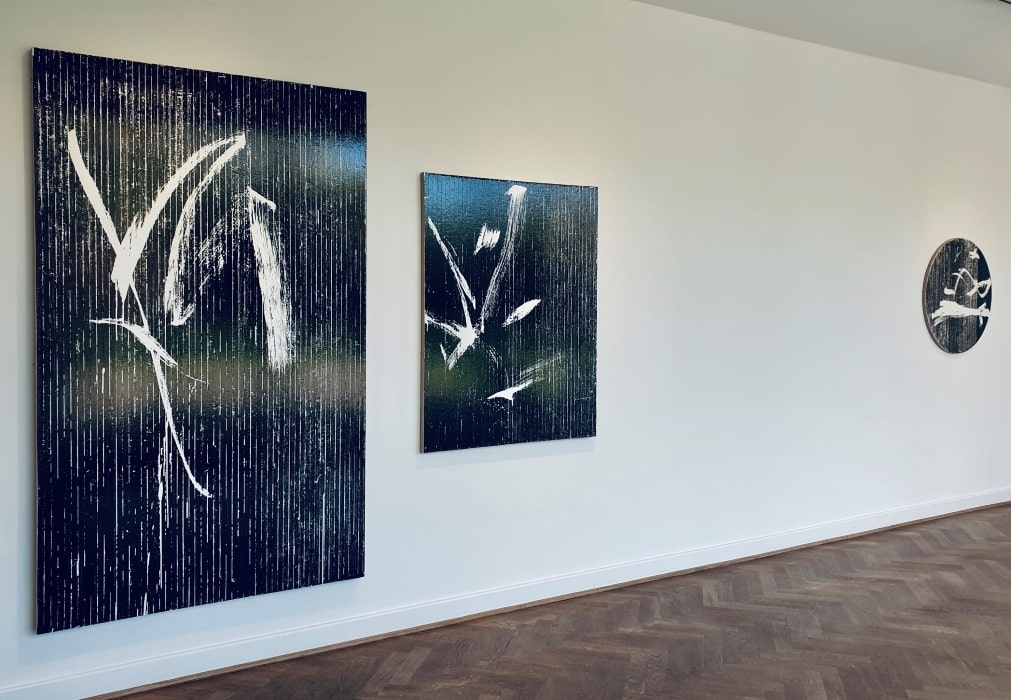
In the song, “Im Sturz durch Raum und Zeit” is followed by the line “Richtung Unendlichkeit” (“Towards infinity”). First of all, Hildebrandt, like perhaps all artists, makes this eternal claim to validity or at least to existence for his works. And he transforms what is perhaps the most ephemeral of all art forms, music, into works that last and often have a seductively tactile quality. But more on that in a moment.
First of all, the third line of the song, “Fly moths into the light”, recalls one of Hildebrandt’s earliest works. In 1997, to prove to his professor that his paintings did have quality, the young artist had clothes moths fly onto some canvases painted with white oil paint so that they would stick there, and called the work “Wie die Motten ans Licht” (Like Moths to the Light) – itself a Marlene Dietrich quote with which she sang about her effect on men.
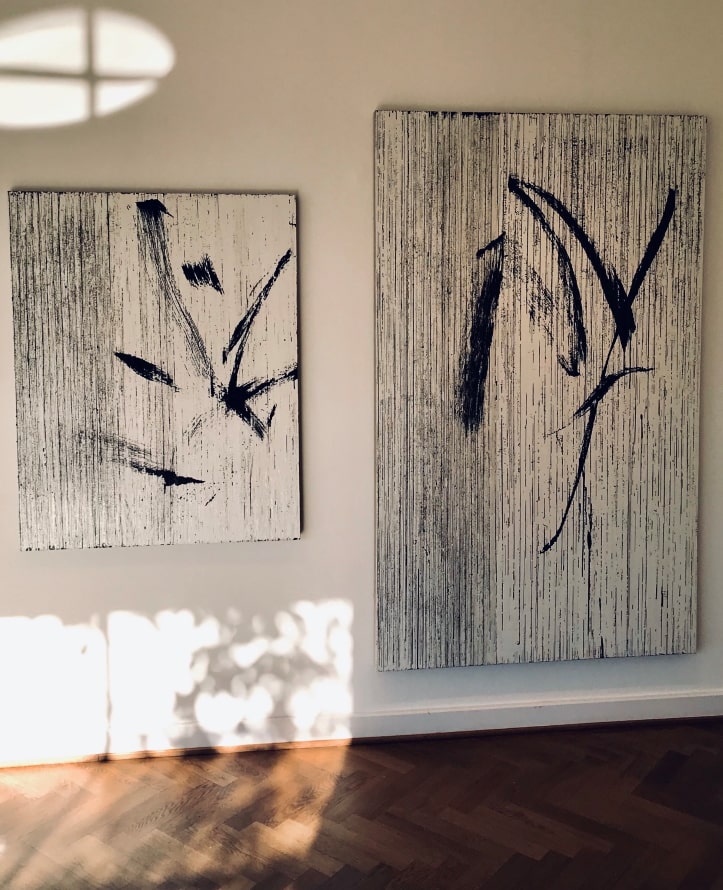
Music, always music. Not only does Gregor Hildebrandt often name his paintings, sculptures and installations after musicians, bands, songs and lines of text. As being said, it is music that he uses to make art. Not so much from or with actual sounds, but from his passion for music and his interest in what it can stand for – youth, friendship, community, experiences that burn themselves in forever – as well as very specifically from analogue storage media such as the record and the cassette tape. Music provides him with his material in several respects.
For example, the Rip-Offs. This is the name of a series of works for which Hildebrandt systematically creates two images on two equally sized, white-primed canvases using strips of black cassette tape, the positive and the negative part of the same motif. The images are black and white like the keys of a piano or like the pattern of a chessboard – another of Hildebrandt’s areas of interest, represented in the exhibition by the 2.29-metre-high bronze pawn sculpture.
Hildebrandt always plays music on the tape beforehand – how could it be otherwise? In the case of the three pairs of pictures on view in this exhibition, they are three songs that have only one thing in common: In them, no text is sung at certain points, but rather vocalised: Ah, oh” and “Hm, hm” respectively. Free association.
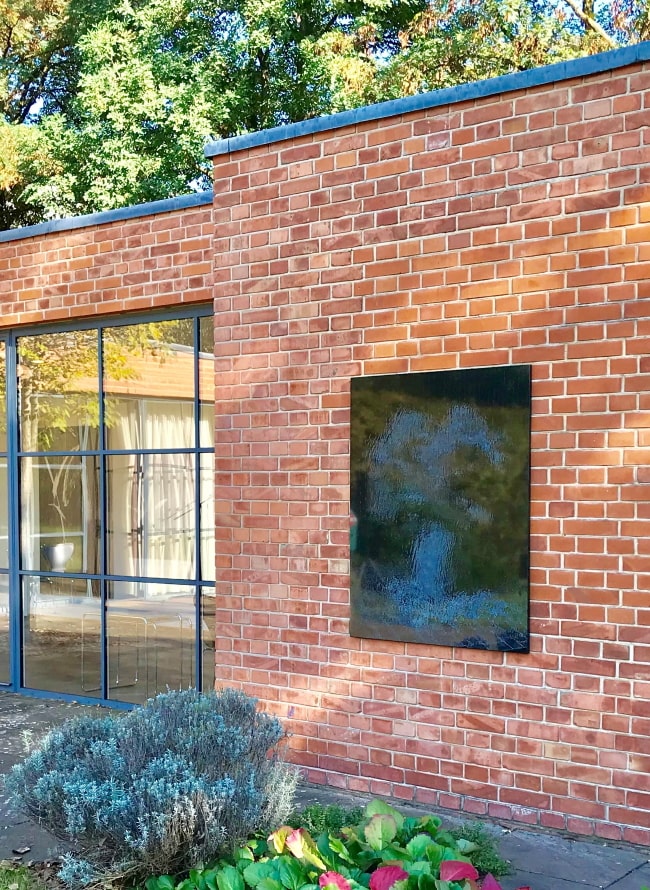
At the beginning of the second stanza, “In the fall through space and time” becomes “In the fall through space and time” through the mirror-image interchange of two words: “In the fall through time and space”. Hildebrandt arranges the works that belong together in space in such a way that the positive and negative versions are mirrored in each other. Even more, all three pairs of pictures are arranged in such a way that where the vertices of the lines meet, which can be thought of as being at right angles from the canvases, a Dolby Surround Sound would be created – in the garden, that is. Hildebrandt, just like Mies van der Rohe when designing, continues to think the house outside its walls. But the sound is only created in the minds of the viewers; it is no longer accessible on the tapes. This procedure exemplifies how Hildebrandt thinks of an exhibition primarily in terms of its space and its structure, and at this point no longer works intuitively-associatively, but based on an exact and planned procedure. Here, music becomes visual art and, through association, becomes music again.
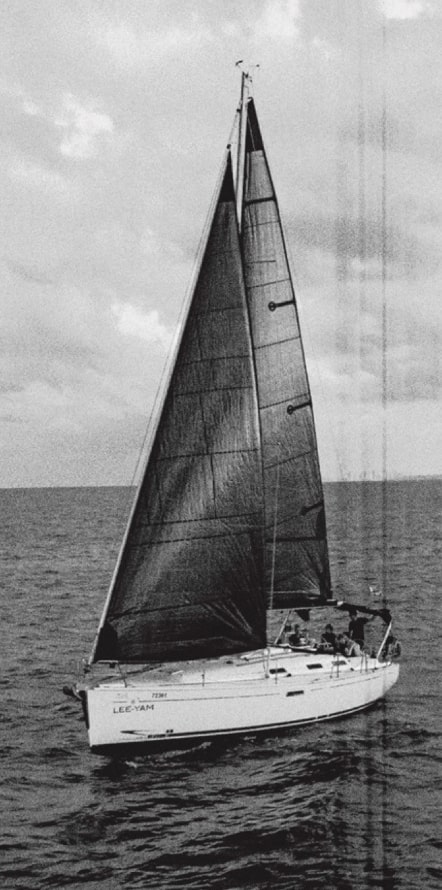
These diverse transformational movements are also inscribed on the raft anchored on the upper lake in front of the house. Hildebrandt had the sail woven from cassette tape, which was recorded with a thematically matching playlist, and sailed with it from Cyprus to Israel in 2017. The faded sound becomes the woven image, the image becomes the sail, the sail takes the artist across the sea and finally here, on the water, becomes part of an installation.
Sail away.
Text: Anne Waak
Translation: DEEDS.NEWS
WHAT?
Gregor Hildebrandt – Im Sturz durch Raum und Zeit
WHERE?
Mies van der Rohe Haus
Oberseestraße 60
13053 Berlin-Hohenschönhausen
Public Transport: Tram M5 until Station Oberseestraße
WHEN?
Tuesday-Sunday 11 am – 5 pm, including public holidays
COSTS?
Admission free


